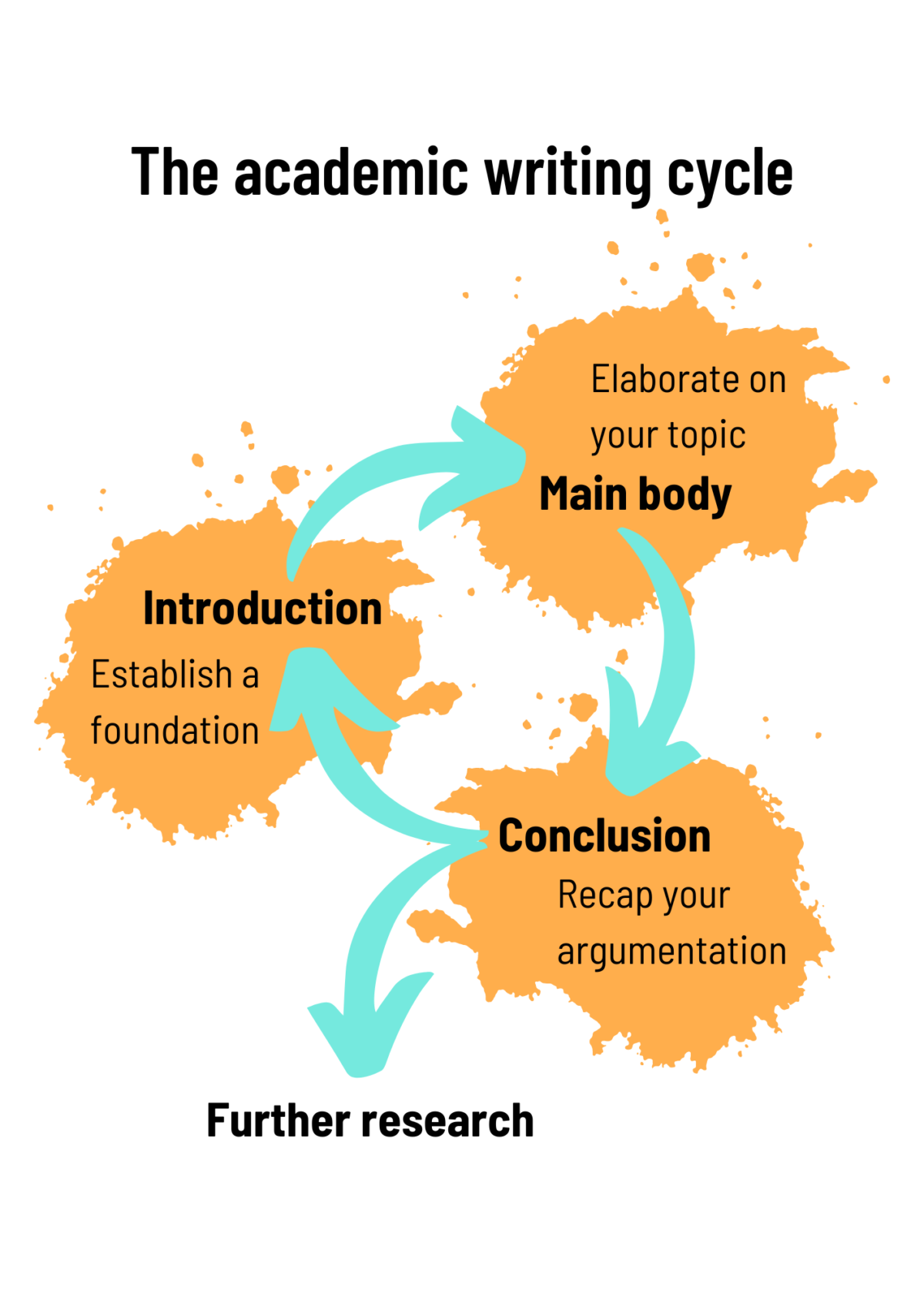- Come full circle – answer your research question(s)!
- Summarize your argument.
- Address potential limitations.
What’s the aim of the conclusion?
The conclusion is a summary of the most important points made in your paper. It ties all the loose ends together and answers open questions. Therefore, the conclusion should answer your research question(s) and help the reader to quickly access the main results. It should also highlight the coherent structure and line of argument in your paper.
If you haven’t convinced your readers so far, you can still win them over with a well-written conclusion! So, set aside enough time to write it.
What should you include in the conclusion of your paper?
The conclusion is an opportunity to recapitulate and broaden the horizon. You can use it to highlight the importance of your work and talk about its limitations. A good and convincing paper is critical as well as self-reflective.
While disciplines may have different preferences for what belongs in a conclusion, you should cover the following aspects:
- Summarize your main ideas: This needs to be short and concrete! It shouldn’t be more than one paragraph. If you find it difficult to know what is most important, write down one sentence per chapter. Then, choose the most relevant sentences, and connect them in a snappy summary that only addresses the points most relevant to your argument.
- Answer your research question(s): This goes hand in hand with the summary or your argument. Reiterate your research question(s) and clearly state your answers. This way, you come full circle again.
- Address weaknesses and limitations: This might seem counterintuitive, but it actually showcases your knowledge. It shows how well you understand your study in its context. Be careful, however, to not weaken your claims. You can be critical of your work, whilst still seeing its merit.
- Address the impact of your findings: This is your chance to tell your readers WHY your research matters. Situate your results within existing studies and explain how they relate to – agree with or oppose – existing knowledge.
- What happens next? Give your readers an outlook. This can be as simple as “Further research in this area should focus on XY”. Stay away from speculation, however. You can link this to the limitations of your study by suggesting a further investigation into areas you weren’t able to study.

How do you write a convincing conclusion?
The conclusion takes up only 5-10% of your paper. This means that you have to choose your words carefully. There’s no space for new information or evidence, as this not only uses up words but also weakens your argument.
Conclusions are all about purposeful wording. So, come up with a plan in which you organize the flow of your conclusion. You can dedicate separate paragraphs to the aspects listed above. Most importantly, write your conclusion with the question “So what?” in mind. For example:
- “This study shows that small-scale crop irrigation can be fully powered by energy from solar panels.” – So what? Why does this matter? How does it affect agriculture?
- “I argue that the use of traditional imagery and stereotypical depiction used in Westerns undermines the establishment of a new genre (the Southern).” – So what? What does this prove? How does it affect the value of the film?

- Don’t open new points of discussion!
- Don’t recapitulate everything in detail!
- Don’t weaken your claims!
Test yourself
What should you avoid doing in your conclusion?
A. Answering your research question(s)
B. Introducing new information or evidence
C. Celebrating having reached a conclusion
What question should you ask yourself whilst writing the conclusion of your paper?
A. Am I done yet?
B. What should I have for dinner tonight?
C. So what?
What should you be mindful of when addressing the limitations of your study?
A. You shouldn’t mention the limitations at all.
B. You shouldn’t write about your limitations late at night. It’s bad luck!
C. You shouldn’t weaken your claim by doubting your findings.
How long should the conclusion of your paper be?
A. 2 miles
B. 5-10 %
C. As long as need be
What is the aim of the conclusion?
A. To be done with writing the paper and go party
B. To answer the research question(s) and highlight your argument
C. To talk about your experience of writing the paper
Solutions:
B / C / C / B / B
